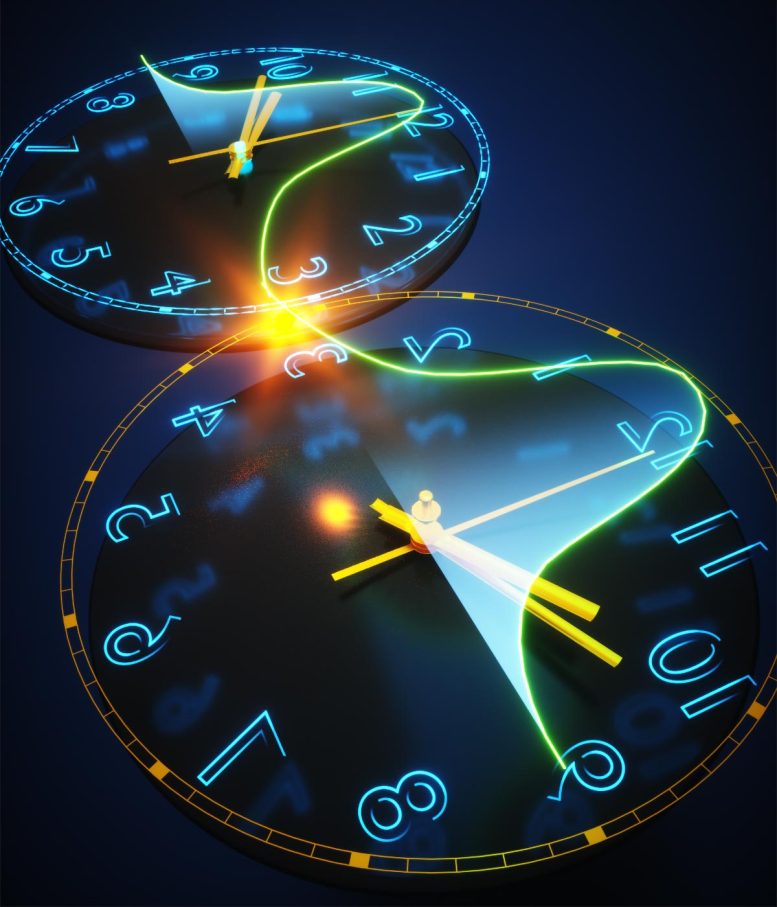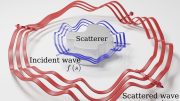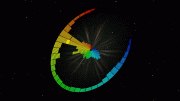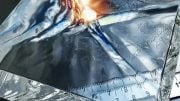
Researchers at CUNY ASRC have discovered a method to manipulate photons so they can collide and interact using tailored metamaterials. This breakthrough could lead to significant advances in telecommunications, optical computing, and energy applications. (Schematic drawing of a photon collision at a time interface.) Credit: Anna Umana, Advanced Science Research Center at the CUNY Graduate Center
Researchers show it’s possible to make photons that cross paths interact, paving the way for technology breakthroughs.
A research team at the Advanced Science Research Center at the CUNY Graduate Center (CUNY ASRC) has demonstrated that it is possible to manipulate photons so that they can collide, interacting in new ways as they cross paths. Detailed in the journal Nature Physics on August 14, the discovery will allow scientists who develop technologies rooted in electromagnetic wave propagation to make significant advances in telecommunications, optical computing and energy applications.
The Breakthrough and Its Foundation
The breakthrough occurred in the lab of Andrea Alù, Distinguished Professor and Einstein Professor of Physics at The City University of New York Graduate Center and founding director of the CUNY ASRC Photonics Initiative. It built upon another recent experiment that demonstrated time-reflections for electromagnetic waves.
“Our work is building on a series of experiments that show how we can create metamaterials with unique properties that emerge from abrupt time variations of their electromagnetic properties. These variations allow us to manipulate wave propagation in ways not seen in nature,” explained Alù. “This newest work shows that we can use abrupt temporal changes in tailored metamaterials – known as time interfaces – to make waves collide as if they were massive objects. We were also able to control whether the waves exchanged, gained, or lost energy during these collisions.”
Collision of Waves and Photons
Typically, when two electromagnetic waves cross paths, they move right through each other without interacting. This is very different from what happens when two massive objects, like two balls, bump into each other. In the latter case, the particles collide, and their mechanical features determine whether the energy is conserved, lost, or increased in the collision. For example, when two billiard balls collide, the total energy in the system is conserved, while when two rubber balls collide, they typically lose energy in the collision.
Although photons would be expected to go through each other without any interaction, by triggering a time interface the scientists were able to demonstrate strong photon-photon interactions and control the nature of the collision.
The research team’s work was inspired by speculation about whether it would be possible to erase an unwanted mechanical wave, such as a tsunami or a seismic wave, by throwing another similar wave against it to counter it. “While such an outcome is impossible in conventional wave physics, we knew it was possible in principle with a temporal metamaterial,” said Emanuele Galiffi, a postdoctoral fellow with Alù’s lab and the study’s leading author. “Our experiment allowed us to demonstrate this concept in action for electromagnetic waves.”
Applications and Future Work
The scientists also proposed and demonstrated an application of their concept to shape electromagnetic pulses by colliding them against each other. Gengyu Xu, a postdoctoral fellow with Alù’s lab and co-leading author of the paper, elaborated, “This technique allows us to use an additional signal as a mold to sculpt a pulse that we are interested in structuring. We have shown this for radio frequencies, and we are now working to realize this sculpting ability at higher frequencies.”
The team’s efforts in developing methods to dictate how propagating electromagnetic waves interact and shape each other could bring benefits to wireless communications, imaging, computing, and energy harvesting technologies, among other advancements.
Reference: “Broadband coherent wave control through photonic collisions at time interfaces” by Emanuele Galiffi, Gengyu Xu, Shixiong Yin, Hady Moussa, Younes Ra’di and Andrea Alù, 14 August 2023, Nature Physics.
DOI: 10.1038/s41567-023-02165-6









According to topological vortex gravitational field theory, not only can photons be manipulated at close range, but it is also possible to manipulate photons remotely. As long as the topological vortices cut into each other at an appropriate angle or form a Möbius strip, no matter how far apart they are, it is possible to achieve it.
The nature of the experiment mechanics of using like photons collision at manipulated pulsed value, could a change of the medium not using a photon maybe a particle could be used with different purpose to find other allusive invisible mass, catch a value of dark nonreflective neutrally charged mass.( Dark Matter, the Demon particle, the Axion all seem to have similar effects ).
Phase conjugate mirror is the closest thing to time reversal I know of.
Anyway, here again the tax-wasting PTB immensely enjoys hiring people willing to professionally pretend to be able to mess with other people’s time, and beyond the particle limits of SR, as if it should mean something. Reminds me of negative mass, push on the front with light pressure and you might as well be pushing on the back. Now where is the local hit-and-run whistle-stuffing MOND royalist.
“while when two rubber balls collide, they typically lose energy in the collision.”
Not if the rubber is perfectly elastic.